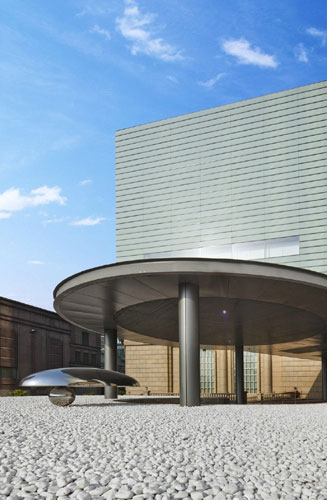Home> Leisure
AURORA Museum
Updated: 2015-03-17
( chinadaily.com.cn )

The golden AURORA building, located on the bank of the Huangpu River, is considered a landmark of Shanghai.
Housing a wide array of exhibits, including Buddha statues, jade artifacts and porcelain, the museum is another effort fromAURORA Group Chairman Chen Yung-tai to promote traditional Chinese culture.
It was designed by renowned Japanese architect Tadao Ando and the exhibits are from Chen's personal collection.
"There are many museums in China, but ours is different in that we have set up an ancient relic research center in cooperation with Peking University," Chen said.
"In addition to studies, we offer art and antique lovers opportunities to examine those artifacts we have."
No 99, Fucheng Rd, Pudong New Area, Shanghai
021-5840-8899
Opening hours: 10 am to 5 pm, Tuesday to Sunday; 10 am to 9 pm, Friday
Tickets: 60 yuan ($9.59) per person
Current Exhibitions
Toshiyuki Kita’s design
Date: Till April 12
Fans of Japanese designer Toshiyuki Kita can enjoy an exhibition of his works on the first floor of AURORA museum for free. Kita extended his creative field from Japan to Italy and to the international arena as an environmental and industrial designer since 1969. He has created many hit products for European and Japanese manufacturers, ranging from furniture to household goods and appliances. Many of his works are collected by the Museum of Modern Art in New York, Centre Georges Pompidou in Paris, Pinakothek der Moderne in Munich, Germany and other museums around the world.
Jade carving with animal designs in the pre-Han and Han Periods
Date: till April 30
The Chinese tradition of carving jade is characterized by continuity and innovation over its immensely long history. As early as the mid Neolithic period, about 8,000 years ago, people from Northeast China were carving special jade tools and jewelry. Jade carving in the Warring States Period (475-221 BC) had shown much craftsmanship in shape and ornamentation. The technique then greatly improved in Han Dynasty (202 BC-AD 220). The exhibition displays more than 100 jade pieces with animal designs in these periods, showing the different jade carving styles.














